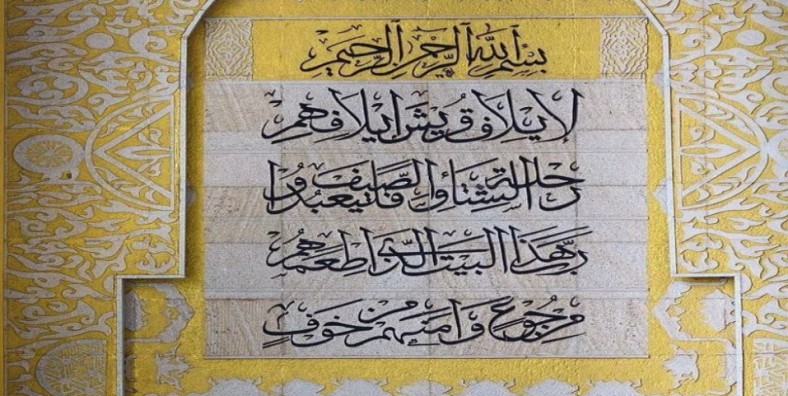
Top Muslim Mosques in Dehong
Dehong Dai and Jingpo Autonomous Prefecture (德宏傣族景颇族自治州), though home to a relatively small number of mosques, plays an important role in preserving the religious practices of the Hui Muslim community and fostering cross-border cultural exchange between China and Myanmar. The two main mosques, Mangshi Mosque (芒市清真寺) and Ruili Mosque (瑞丽市清真寺), not only preserve Islamic traditions but also integrate local ethnic features, making them vital centers for religious and cultural interaction in the region.
Mangshi Mosque (芒市清真寺)
Location
Mangshi Mosque is situated in Mangshi Town, Dehong Prefecture (originally Luxi County, Mangshi Town), Yunnan Province (云南省德宏州芒市), facing west and oriented east. It is a square building with a dome design.
History and Culture
Foundation: Built in 1984 with approval from the provincial government, the mosque covers an area of 2.5 acres, with the main prayer hall spanning 200 square meters. It includes a screen wall, entrance gate, and prayer hall.
Cultural Significance: The mosque houses 50 volumes of Arabic scriptures, making it the central location for religious gatherings and celebrations for the local Muslim community.
Cultural Legacy: The mosque serves more than 800 Muslim worshippers, all of whom are of Hui ethnicity, with religious leadership provided by 7 community leaders (学董) and 5 Imams (阿訇). It plays a dual role as both a religious and cultural institution.
Social Functions
The mosque serves as a weekly gathering place for worship and offers educational and charitable services, contributing significantly to the local community’s social and cultural life.
Honors and Achievements
Recognized as one of the top ten scenic spots in Mangshi, the mosque is surrounded by ancient cypress trees and rare flowers, adding to its significance as both a cultural and religious landmark.
Nearby Attractions and Travel Suggestions
Visitors to Mangshi Mosque can also explore other cultural sites in the area, such as Wuyun Temple (五云寺), which offers a comprehensive cultural tour. The mosque’s location provides a unique opportunity to experience the region’s religious and ethnic diversity.
Ruili Mosque (瑞丽市清真寺)
Location
Ruili Mosque is located at the intersection of Xinjian Road and Leiliang Alley in Ruili City (瑞丽市), close to major transportation routes, offering easy access for visitors.
History and Culture
Foundation: Serving as an important religious site in the border region between China and Myanmar, Ruili Mosque plays a crucial role in meeting the religious needs of the local Muslim community while promoting cross-border ethnic and religious exchanges.
Historical Background: While the exact date of its establishment is not clearly recorded, Ruili Mosque has long functioned as a place for cultural and religious exchange between the two countries.
Cultural Legacy: The mosque’s architecture may blend traditional Hui Muslim styles with local ethnic design elements, reflecting the fusion of Islam and the indigenous cultures of the region.
Social Functions
The mosque not only provides a place for regular worship but also serves as a venue for festivals and celebrations, facilitating ongoing cultural and religious dialogue between the Muslim communities in both China and Myanmar.
Nearby Attractions and Travel Suggestions
Located near the historic Ruili Ancient City (瑞丽古城), visitors can easily combine their visit to the mosque with a tour of other nearby attractions, such as the Silk Road Style Town (丝路风情小镇) and Muna Zongge Square (目瑙纵歌广场). The area offers a rich cultural experience that blends the region’s ethnic diversity and border trade, making it an excellent stop for a one-day tour.
These two mosques are not only spiritual sanctuaries for the Muslim communities in Dehong but also witnesses to the coexistence of diverse religious traditions along the Southern Silk Road. They play an irreplaceable role in promoting ethnic unity and cultural exchange, contributing significantly to the development of Dehong as a “National Unity and Progress Demonstration Zone” (民族团结进步示范区).

 7 Days GolfingTour
7 Days GolfingTour
 8 Days Group Tour
8 Days Group Tour
 8 Days Yunnan Tour
8 Days Yunnan Tour
 7 Days Shangri La Hiking
7 Days Shangri La Hiking
 11 Days Yunnan Tour
11 Days Yunnan Tour
 6 Days Yuanyang Terraces
6 Days Yuanyang Terraces
 11 Days Yunnan Tour
11 Days Yunnan Tour
 8 Days South Yunnan
8 Days South Yunnan
 7 Days Tea Tour
7 Days Tea Tour
 8 Days Muslim Tour
8 Days Muslim Tour
 12 Days Self-Driving
12 Days Self-Driving
 4 Days Haba Climbing
4 Days Haba Climbing
 Tiger Leaping Gorge
Tiger Leaping Gorge
 Stone Forest
Stone Forest
 Yunnan-Tibet
Yunnan-Tibet
 Hani Rice Terraces
Hani Rice Terraces
 Kunming
Kunming
 Lijiang
Lijiang
 Shangri-la
Shangri-la
 Dali
Dali
 XishuangBanna
XishuangBanna
 Honghe
Honghe
 Kunming
Kunming
 Lijiang
Lijiang
 Shangri-la
Shangri-la
 Yuanyang Rice Terraces
Yuanyang Rice Terraces
 Nujiang
Nujiang
 XishuangBanna
XishuangBanna
 Spring City Golf
Spring City Golf
 Snow Mountain Golf
Snow Mountain Golf
 Stone Mountain Golf
Stone Mountain Golf

















